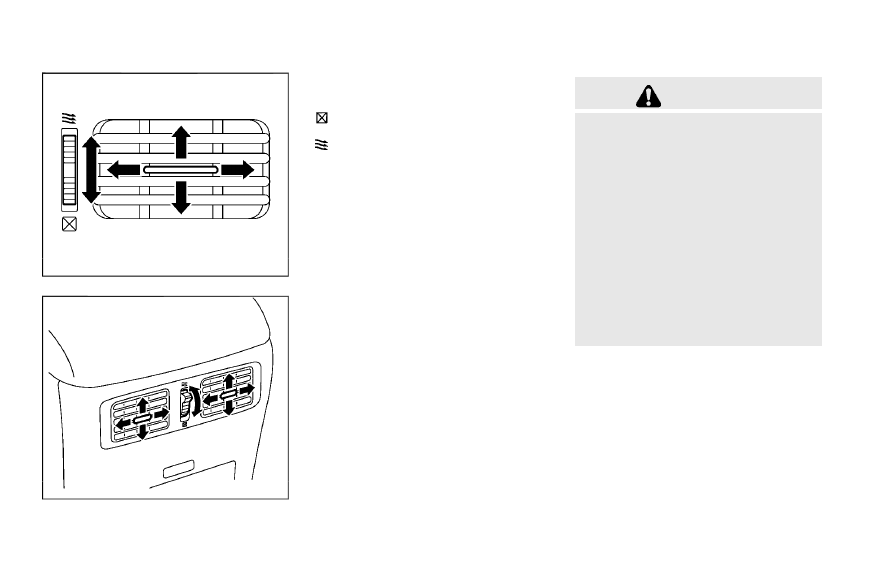Infiniti Q70 (2019 year). Instruction - part 13

4-32
Monitor, climate, audio, phone and voice recognition systems
SAA3142
Front
SAA3012
Rear
Open or close, and adjust the air flow
direction of ventilators.
: This symbol indicates that the ventilators
are closed.
: This symbol indicates that the ventilators
are open.
WARNING
. The air conditioner cooling function
operates only when the engine is
running.
. Do not leave children or adults who
would normally require the support
of others alone in your vehicle. Pets
should not be left alone either. On
hot, sunny days, temperatures in a
closed vehicle could quickly become
high enough to cause severe or
possibly fatal injuries to people or
animals.
. Do not use the recirculation mode for
long periods as it may cause the
interior air to become stale and the
windows to fog up.
Start the engine and operate the automatic
climate control system.
VENTILATORS
HEATER AND AIR CONDITIONER